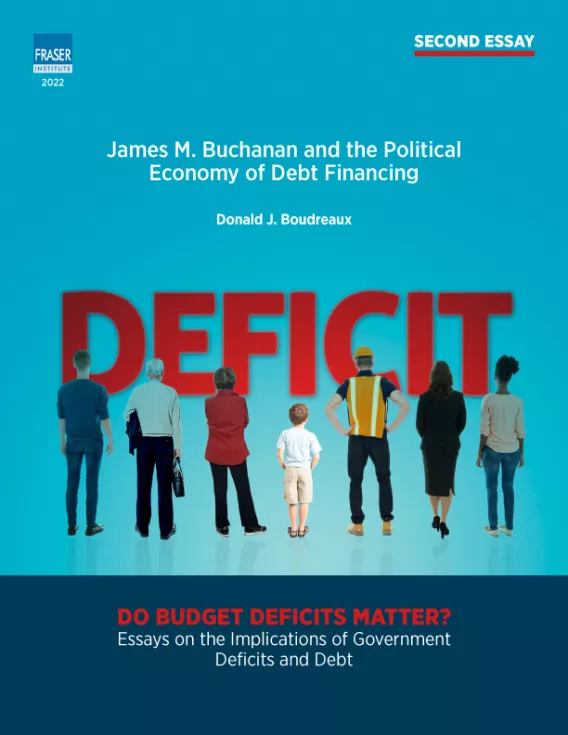- | F. A. Hayek Program F. A. Hayek Program
- | Book Chapters Book Chapters
- |
James M. Buchanan and the Political Economy of Debt Financing
Published by Fraser Institute

The car that Jones currently owns and drives is 20 years old and is no longer reliable. And so Jones is considering buying a better vehicle. But not being a multi-millionaire, Jones can’t afford the luxury of making a decision rashly. After careful pondering, Jones decides to buy a used (“previously owned”) two-year-old Toyota. For a moment Jones considered buying a brand-new car, but realized that the higher price of the new car makes such a purchase unwise, despite the fact that the new car is a better vehicle than is the used Toyota.
But en route to the used-car dealership Jones encounters a splendid stroke of good luck when he helps two little old ladies cross the street while telling them that he’s on his way to buy a used car. “My dear boy, thank you!” say the old ladies in unison. “We have more money than we know what to do with, and so we’ll pay for your new vehicle. Price is no object! Splurge!”
Jones then rushes off and buys a fully loaded, shiny new Porsche 718 Boxster S.
And herein lies one important lesson emphasized by the late Nobellaureate economist James Buchanan about government financing. The lesson, specifically, is that we spend other people’s money more profligately than we spend our own.
James Buchanan (1919-2013) is best known for co-founding, along with his long-time colleague and co-author Gordon Tullock, public-choice economics. Scholars working in this sub-discipline of economics use the same tools of economic analysis that have proven to be so successful at explaining processes and outcomes observed in private markets to examine processes and outcomes in political “markets.” But the specific subject matter of Buchanan’s earliest work, which he often returned to throughout the six decades of his career, was public finance. Public-finance economists study the causes and consequences of government fiscal budgeting. They do so by looking at both sides of government budgets, the revenue side—that is, taxation—and at the expenditure side.
Additional Details
Find the full article here.

